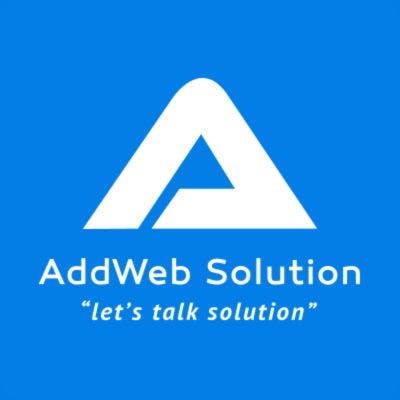Welcome to the world of UX Design for Online E-learning, where user experience (UX) and user interface (UI) solutions are the keys to unlocking engaging and compelling learning experiences. In today's digital age, online education has become increasingly popular, and the design of e-learning platforms plays a crucial role in shaping how learners interact and engage with content. UX design focuses on creating intuitive and user-friendly experiences, ensuring that learners can navigate courses seamlessly and access resources effortlessly. On the other hand, UI design enhances the visual appeal and usability of the platform, making learning a visually stimulating and enjoyable journey. By incorporating UX/UI solutions such as interactive elements, responsive design, and accessibility features, e-learning platforms can cater to diverse learner needs and preferences, ultimately fostering a conducive environment for learning and knowledge retention. Get ready to explore how UX/UI design transforms online education into an immersive and rewarding experience for learners worldwide.
Why is UX Design for Online Learning Important?
UX Design for Online Learning is crucial because it directly impacts how learners interact with educational content, ultimately shaping their overall learning experience. Here’s why it’s so crucial in a user-friendly way:
Engagement:
Engaging learners is key to effective learning. UX design ensures that online courses are intuitive, interactive, and visually appealing, keeping learners motivated and eager to explore further.
Retention:
A well-designed user experience enhances information retention. By implementing straightforward navigation, interactive elements, and personalized learning paths, UX design helps learners retain and apply knowledge more effectively.
Accessibility:
UX design promotes inclusivity by making online learning accessible to everyone, including learners with disabilities. Features like screen reader compatibility, alternative text, and keyboard navigation ensure that no one is left behind.
Efficiency:
A user-friendly interface saves learners time and effort. Intuitive navigation, streamlined workflows, and responsive design allow learners to focus on learning rather than struggling with the platform.
Feedback Loop:
UX design facilitates a feedback loop where learners can provide input on their experiences. This input helps improve the platform over time, leading to continuous enhancements and a better learning environment.
10 Tips for Getting UX Design for Elearning Right
Absolutely! Here are ten tips for getting UX design for e-learning right:
Understand Your Audience:
Understanding your audience is crucial for effective UX design in e-learning. Start by gathering insights into your learners' demographics, goals, preferences, and technical proficiency. This knowledge helps tailor the learning experience to their needs, ensuring relevance and engagement. Consider factors such as age, education level, learning styles, and device preferences to design intuitive navigation, personalized content, and accessible features. By putting your learners at the center of your design process, you can create an e-learning platform that resonates with them, fosters motivation, and maximizes learning outcomes.
Simplify Navigation:
Simplifying navigation is key in the UI/UX design process for e-learning. Create clear menus, logical pathways, and consistent layouts to help learners easily find and access course content. Use descriptive labels and intuitive icons to effortlessly guide users through the platform. Consider the user's journey and organize information logically to reduce cognitive load. Prioritize essential elements and minimize distractions to streamline the learning experience. By simplifying navigation, you enhance usability, minimize frustration, and empower learners to focus on absorbing knowledge effectively.
Prioritize Content Accessibility:
Prioritizing content accessibility is vital in creating an inclusive e-learning experience. Ensure that your platform is user-friendly for everyone, including those with disabilities. Use clear and descriptive alt text for images, provide keyboard navigation options, and ensure compatibility with screen readers. Choose readable fonts and maintain sufficient colour contrast for easy viewing. Test the platform's accessibility features and gather feedback from diverse users to make continuous improvements. By prioritizing content accessibility, you create a welcoming and accessible learning environment where all learners can engage effectively with the educational content.
Mobile Responsiveness:
In today's mobile-driven world, ensuring mobile responsiveness is essential for a successful e-learning experience. Optimize your platform to adapt seamlessly to different screen sizes and devices, such as smartphones and tablets. Maintain a consistent user interface across devices to provide a cohesive learning experience. Prioritize touch-friendly controls and intuitive navigation for mobile users. Test the platform on various devices to ensure smooth functionality and usability. By prioritizing mobile responsiveness, you enhance accessibility and convenience, allowing learners to engage with the content anytime, anywhere, and on any device, thus maximizing their learning experience.
Engage with Interactive Elements:
Engaging learners through interactive elements is key to an effective e-learning UX design. Incorporate quizzes, simulations, videos, and interactive exercises to make learning dynamic and immersive. These elements not only capture attention but also promote active participation and knowledge retention. Use gamification techniques like badges, leaderboards, and progress tracking to motivate learners and enhance engagement. Ensure that interactive elements are intuitive, responsive, and accessible across devices. By engaging with interactive elements, you create a stimulating and enjoyable learning environment that encourages exploration, reinforces concepts, and keeps learners actively involved throughout their e-learning journey.
Personalization:
Personalization is key to optimizing the e-learning experience. Tailor learning paths, content recommendations, and assessments based on learners' preferences, progress, and goals. Offer options for learners to customize their experience, such as choosing their learning pace or selecting topics of interest. Use data analytics and learner feedback to refine and personalize the content delivery continuously. Personalization enhances engagement, motivation, and knowledge retention by catering to individual learning styles and needs. By incorporating personalization in the UX design, you create a more meaningful and effective learning journey that resonates with each learner's unique requirements and aspirations.
Feedback Mechanisms:
Feedback mechanisms are crucial UI/UX designer skills for refining e-learning experiences. Implement surveys, polls, and rating systems to gather insights from learners. Regularly collect feedback on usability, content relevance, and overall satisfaction to identify areas for improvement. Use this valuable input to iterate and continuously enhance the UX design. Incorporate features like feedback forms and suggestion boxes within the platform to encourage user participation and engagement. By leveraging feedback mechanisms, you empower learners to voice their opinions, shaping a more user-centric e-learning environment that meets their needs and delivers a rewarding learning experience.
Performance Optimization:
Performance optimization is vital for an effective e-learning UX design. Ensure fast loading times, smooth navigation, and seamless functionality to enhance user experience. Optimize multimedia content for quick streaming and minimize page load times to keep learners engaged. Test the platform across different devices and network conditions to identify and address performance bottlenecks. Use efficient coding practices, caching strategies, and content delivery networks to improve overall performance. By prioritizing performance optimization, you create a frustration-free learning environment where learners can focus on absorbing knowledge without interruptions or delays, leading to a more successful e-learning experience.
Visual Design:
Visual design plays a crucial role in creating an engaging e-learning UX. Use appealing colour schemes, visually pleasing typography, and relevant imagery to enhance the overall look and feel of the platform. Maintain consistency in design elements to provide a cohesive experience. Organize content with a clear hierarchy and spacing for easy readability. Incorporate visual cues such as icons and graphics to aid navigation and understanding. Balance aesthetics with functionality to create a visually stimulating yet intuitive interface. By prioritizing visual design, you create an inviting and immersive learning environment that captivates learners and enhances their overall e-learning experience.
Usability Testing:
Usability testing is a critical step in ensuring an effective e-learning UX design. Conduct tests with real users to evaluate the platform's ease of use, functionality, and overall user experience. Gather feedback on navigation, content organization, and interactive elements to identify areas for improvement. Use testing tools, surveys, and observation to gather actionable insights. Iterate and refine the design based on test results to enhance usability and user satisfaction. By prioritizing usability testing, you validate the design decisions, uncover usability issues, and create a user-friendly e-learning environment that meets learners' needs and expectations effectively.
Conclusion
To summarize the importance of effective UX design for online e-learning, a well-crafted user experience can significantly impact the success of educational platforms. By prioritizing elements such as user-centric design, intuitive navigation, interactive features, accessibility, and appealing visuals, e-learning platforms can create engaging and meaningful experiences for learners. However, achieving this level of design excellence often requires expertise in web UI/UX design.
That's why it's crucial to hire a skilled web UI/UX designer who understands user behavior, incorporates industry best practices, and continually refines the design based on user feedback and testing. A knowledgeable designer can bridge the gap between technical functionality and user satisfaction, ensuring that the e-learning platform not only meets but exceeds user expectations.
Ultimately, investing in UX design isn't just about aesthetics—it's about creating a learning environment that fosters engagement, enhances retention, and empowers learners to achieve their educational goals effectively.

